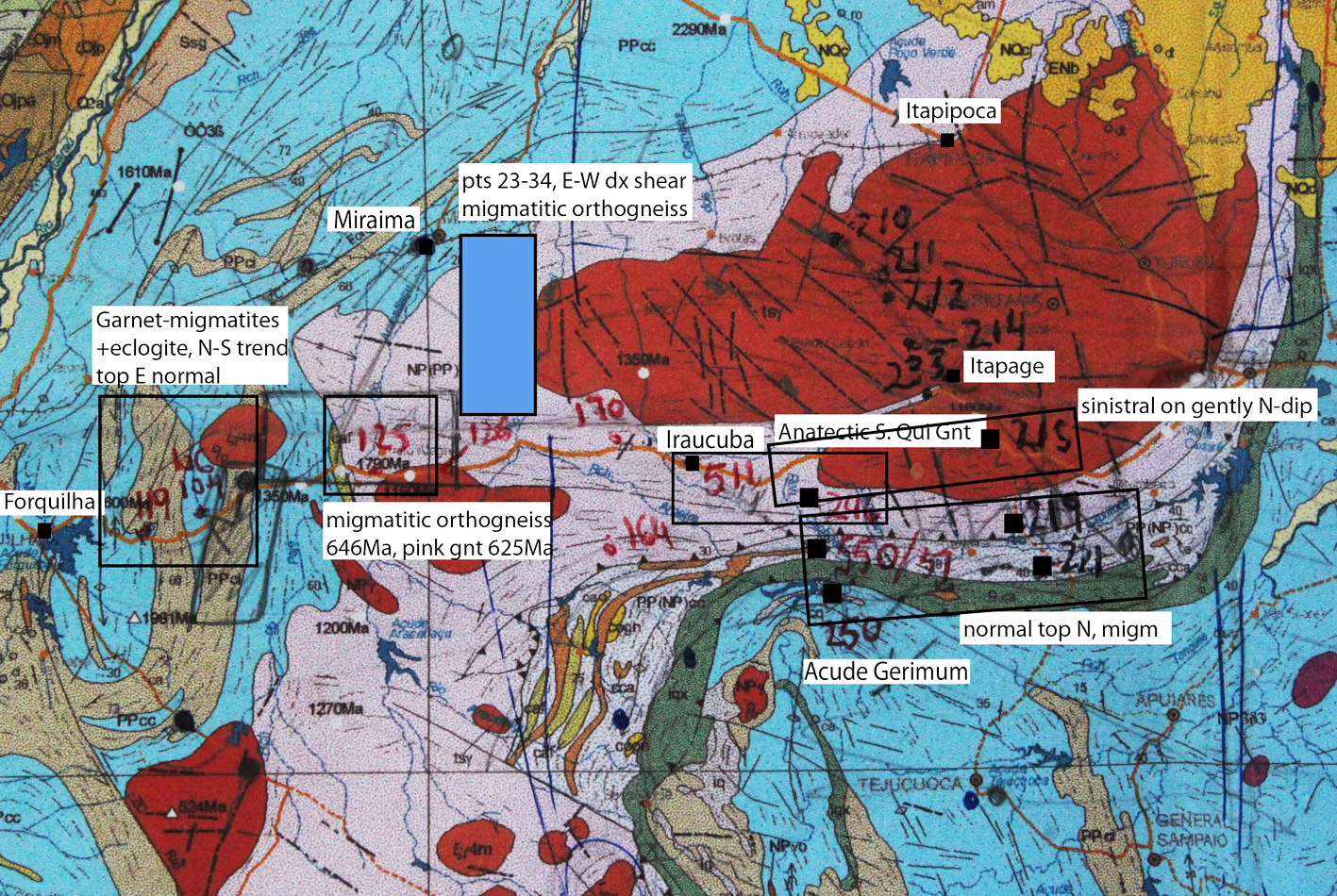NW Section of the Tamboril-Santa Quiteria Complex, Ceara, Brazil
|
|
This page is part II of our study of the Santa Quiteria Complex Part I. Here the focus is the area NW and W of Santa Quiteria , between the towns of Itapipoca, Amontada and Miraima. This page also documents two outcrops of the Transbrasiliano Lineament. We define the Itapipoca-Amontada structural domain that is characterized by two deformation phases, contemporaneous with water-fluxed melting and the production of hornblende leucosomes. a) D1 is characterized by N-S shear foliation with a well developed lineation plunging genlty to S-SSE. Outcrops DKE 600-602 and 605 shows D1 overprinted to different degrees by D2. In these, S1 dips to the west and the movement combines dextral and normal components. Elsewhere, S1 dips to the east and has a similar lineation but the movement sense combines dextral and reverse components DKE 606 and 609). These define large scale folds plunging south. Within S1 there are isoclinal folds. Rocks typically have undergone anatexis and leucosomes contain Hbl and Bt and lack anhydrous pertitectic phases. b) D2 is characterized by folds and thrusts with a small dextral component. It overprints D1 and is characterized by asymmetric upright plunging folds trending NE-SW. These are commonly small scale folds (50cm scale) associated with axial planar leucosomes with Hbl or Bt and lacking anhydrous peritectic minerals. c) Overprinting of D1 by D2 gives rise to small scale domes and basins. We also define the Forquilha-Miraima structural domain characterized by normal movement to E and ESE on shallow dipping foliations. The conclusion in Part I that the core area of the Santa Quiteria pluton went down in relation to its surroundings during a generalized extension is further supported here.
|

|
| 1a) Geological Map of the Santa Quiteria granite in red and surroundings with hand written field stations. |
|
|
|
| 5a) Mylonitic Part of the Transbrasiliano Lineament. | 5b) zoom in. |